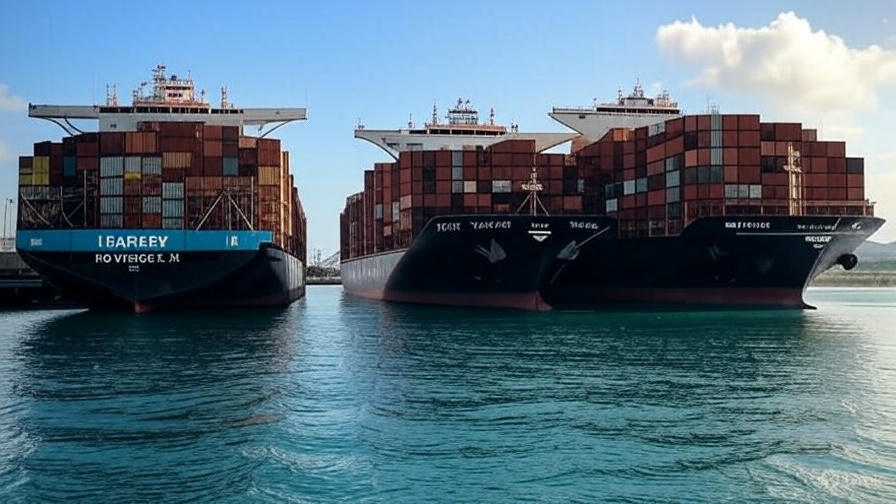World’s largest container ship docks at Vizhinjam International Seaport," details a significant milestone for India’s maritime infrastructure. It highlights the arrival of the MSC IRINA, the world’s largest container ship, at Vizhinjam International Seaport in Kerala, marking its first docking at a South Asian port.
Overview of the Event
The MSC IRINA, a mega-container ship with a capacity of 24,346 TEUs (Twenty-foot Equivalent Units, a standard measure for container capacity), docked at Vizhinjam International Seaport on the morning of Monday, June 9, 2025.
The ship, operated by the Mediterranean Shipping Company (MSC), one of the world’s largest shipping lines, is part of the triple-E class of Ultra-Large Container Vessels (ULCVs). Its arrival underscores Vizhinjam’s growing capability to handle some of the largest vessels in global maritime trade.
This marks the first time a ship of this size has docked at a South Asian port, highlighting Vizhinjam’s advanced infrastructure compared to other regional ports like Colombo or Karachi.
Ship Specifications
The MSC IRINA measures 400 meters in length and 61.5 meters in width, making it a logistical giant designed for high-volume trade routes. It can carry the equivalent of 24,346 standard 20-foot containers, a record-breaking capacity for container ships.
About Vizhinjam International Seaport
- Vizhinjam International Seaport, located in Kerala, is India’s first deep-water transshipment port, developed by Adani Ports and Special Economic Zone (APSEZ) under a public-private partnership with the Kerala government. The port’s strategic location near international shipping routes in the Arabian Sea makes it a vital hub for global trade.
- When : The port was officially inaugurated by Prime Minister Narendra Modi on May 2, 2025, after years of development. The project, initially approved in 2015, faced delays due to environmental concerns, local protests, and funding issues but was completed with an investment of over ₹20,000 crore for its first phase.
- Capabilities : Vizhinjam can handle ULCVs due to its deep draft of 20 meters, which allows large ships to dock without the need for lighterage (transferring cargo to smaller vessels). It also features advanced automation and modern cargo-handling equipment, positioning it as a competitor to established transshipment hubs like Singapore and Colombo.
- Recent Activity: Since its operational start in July 2024, Vizhinjam has handled other large vessels, including the MSC Türkiye (24,116 TEUs) on May 29, 2025, and the MSC Michel Cappellini (19,462 TEUs) on August 16, 2024. The MSC IRINA’s arrival further cements its ability to manage mega-ships.

Significance of the Event
- Vizhinjam’s ability to handle the world’s largest container ship showcases India’s progress in developing world-class port infrastructure. This reduces reliance on foreign transshipment hubs like Colombo, where 70% of India’s transshipment cargo was previously handled.Boost to India’s Maritime Infrastructure:
- The port’s deep-water capabilities and proximity to international shipping routes (just 10 nautical miles from the east-west shipping corridor) make it an attractive stop for global shipping lines.
- Handling ULCVs like the MSC IRINA can significantly increase cargo throughput, boosting India’s trade efficiency. Vizhinjam is expected to handle 1 million TEUs annually in its first phase, with capacity expanding to 6.2 million TEUs upon full completion.
- The port creates direct and indirect jobs, with estimates of 5,000 direct jobs and 50,000 indirect jobs in logistics, warehousing, and related sectors, benefiting Kerala’s economy.
- By enabling direct docking of large vessels, Vizhinjam cuts transshipment costs and transit times for Indian exporters and importers.
- Vizhinjam strengthens India’s position in global maritime trade, particularly in the Indian Ocean Region, amid geopolitical tensions and competition with China’s Belt and Road Initiative ports (e.g., Hambantota in Sri Lanka).Strategic Importance:
- The port enhances India’s role as a transshipment hub, potentially attracting more shipping lines and reducing congestion at other Indian ports like Nhava Sheva (Mumbai) and Chennai.
- Geopolitical Relevance: Vizhinjam’s strategic location has drawn international attention, especially as India seeks to counter China’s maritime influence in the region. Posts on X highlight public sentiment viewing the port as a “game-changer” for India’s trade and security.
- Trade Efficiency: Vizhinjam’s ability to handle mega-ships like the MSC IRINA reduces India’s dependence on foreign ports for transshipment, saving an estimated $200 million annually in transshipment costs.
- Regional Connectivity: The port enhances connectivity for South Indian states, particularly Kerala, Tamil Nadu, and Karnataka, providing faster access to global markets.
- Global Shipping Trends: The arrival of ULCVs reflects the global trend toward larger container ships to achieve economies of scale, driven by rising trade volumes and the need to reduce per-unit shipping costs. Vizhinjam’s infrastructure positions India to capitalize on this trend.
Adani Ports’ Role
APSEZ, India’s largest private port operator, manages Vizhinjam under a 40-year concession agreement, with an option to extend for another 20 years. This success reinforces Adani’s dominance in India’s port sector, which includes major ports like Mundra and Krishnapatnam.
The achievement aligns with Adani’s goal to make Vizhinjam a global transshipment hub, competing with Singapore and Dubai.



Comments
Write Comment